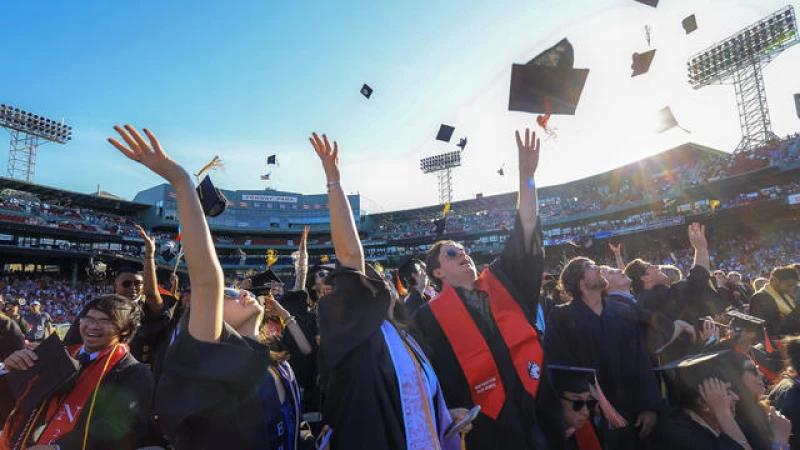President Biden will be unveiling fresh proposals for either partial or complete student loan forgiveness on Monday in Wisconsin.
The primary focus of the latest student loan forgiveness proposals is to address accrued and capitalized interest on student loans. The Biden administration reports that 25 million Americans who utilized federal student loans currently owe more than their initial borrowing due to the accumulated interest charges.
However, the president's new loan forgiveness plan will need to navigate various obstacles before any reductions in student loan balances can be implemented.
The strategy to tackle interest on student loans will undergo approvals via the federal rulemaking process, which senior officials indicate will commence in the upcoming months and will involve a public comment period.
Officials have only mentioned that partial loan forgiveness could potentially occur by "early this fall."
If the proposal receives approval, officials anticipate that 23 million American borrowers could see "all of their balance growth forgiven."
Under the interest-specific loan forgiveness plan, regardless of income, any Americans with federal student loans would be eligible for a one-time "cancel[ation] up to $20,000 of the amount a borrower's balance has grown due to unpaid interest on their loans after entering repayment," the Education Department said.
But some low and middle-income borrowers could see more than $20,000 of interest-specific costs waived.
For single borrowers making under $120,000 per year and who are enrolled in the Education Department's income-based repayment plans, these borrowers "would be eligible for waiver of the entire amount their balance has grown since entering repayment," the department said.
The student loan proposals Mr. Biden is announcing also include several other targeted options for loan forgiveness.
For instance, the Education Department is proposing to automate loan forgiveness programs that are already in place, like the Public Student Loan Forgiveness plan and the process that forgives the remainder of undergraduate student loan balances after 20 years of payments. This means that borrowers would no longer have to apply for these forms of loan forgiveness.
And the administration also said it is pursuing "a specific action that is dedicated to canceling student debt for borrowers experiencing hardship in their daily lives that prevent them from fully paying back their loans now or in the future." However, few additional specifics were shared by officials about this "hardship" proposal.
This slate of new loan forgiveness proposals will also have to withstand potential legal challenges.
The president's original loan forgiveness proposal—which would have canceled around $10,000 for many student loan borrowers—was struck down by the Supreme Court last year. The Department of Education relied on the 2003 HEROES Act as its legal justification for wiping out roughly $430 billion in debt. The law authorizes the education secretary to "waive or modify" student financial assistance programs for borrowers "in connection" with a national emergency, such as the pandemic. But the Supreme Court ruled that the law does not grant the secretary that authority.
Additionally, several Republican attorneys general are now challenging Mr. Biden's second loan forgiveness process — the "SAVE Plan" — which is based on borrowers' income and effectively cancels monthly payments for low-income Americans.
Asked about potential legal hurdles, the senior administration officials said they were "confident" in the legal basis.







